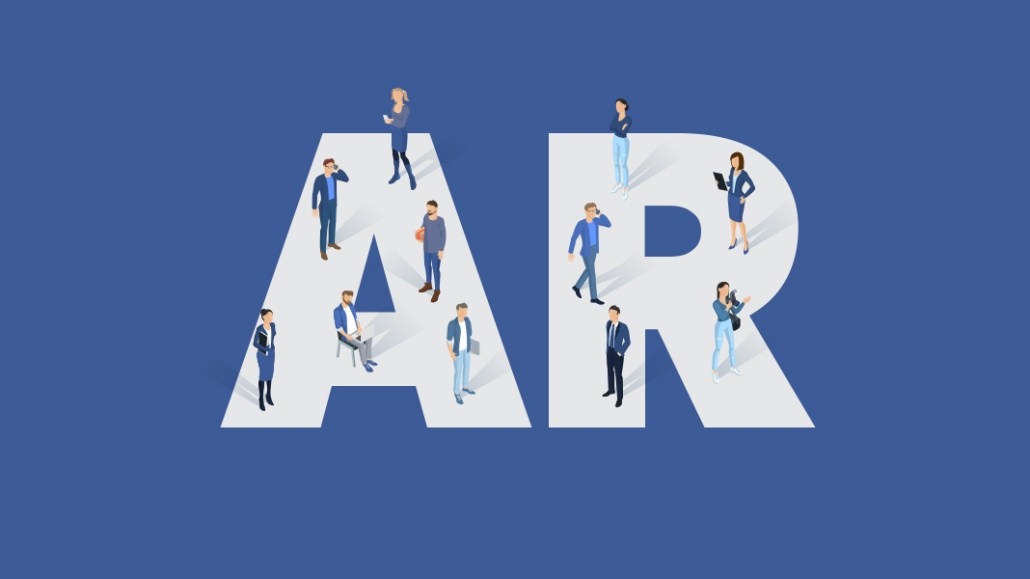For all the hype about VR, advertisers are more excited by AR (for now)

For all the bleakness in Snapchat’s first-quarter earnings call on May 1, there was one shining ray of hope: The platform saw a 16 percent year-over-year increase in the number of augmented reality lenses sold. The same day, Facebook had its own slew of AR news. At its annual F8 conference, Facebook announced AR features it would bring to advertisers, including AR ads on Instagram.
Ad buyers aren’t surprised. AR and VR are slowly moving mainstream, but while the majority of marketers foresee an uncertain future ahead for VR ads, they aren’t saying the same about its slightly less technical cousin — AR ads.
Ad buyers say they are seeing increases in spending when it comes to AR ads, and with new AR features coming from Facebook, they believe budgets will only expand, according to four ad buyers Digiday spoke with for this article.
“Brands are definitely spending more on AR ads,” said Jeremy Sigel, global svp of content and innovation at GroupM’s Essence.
In the past year, both Snapchat and Facebook have introduced new features to make AR more accessible for users and advertisers. Facebook launched its Camera Effects Platform and AR Studio, while Snapchat introduced its Lens Studio, a self-serve platform for AR, and in April, Shoppable AR lenses, a way for advertisers to include a button that redirects users to a video, website or app store.
So far, most AR budgets have been directed toward Snapchat because of improvements like these, according to ad buyers.
“We are seeing broader interest from advertisers with AR-enabled lenses. Much of this is still with Snapchat, where their platform has the most expansive ad opportunities,” said James Douglas, svp and executive director of social media for IPG Mediabrands-owned Society. “For advertisers that have run AR-enabled lens placements, we have seen positive sales and engagement impact, which is helping justify additional investment.”
Snapchat has also been actively working to prove to advertisers that its AR lenses drive sales, using third parties Nielsen Catalina, Neustar and Placed to measure their effectiveness across users. According to Snapchat, Nielsen found that across 22 consumer packaged goods AR lenses campaigns, the average sales life was 10 percent, while lenses drove a 19-point lift in ad awareness and a seven-point lift in brand awareness.
At F8, Facebook announced a slew of new AR features, the most significant being that it will bring AR to Instagram’s 800 million users. Along with adding AR support for Instagram, Facebook is introducing support for third-party AR filters in Messenger, Instagram and Facebook Lite, and it’s working with a handful of brands, including Sephora, Kia, Nike and Asus, on a private beta test ahead of time. Sephora, for instance, will use an AR overlay that allows users to try on makeup, and users can then share photos taken with the filters with friends on Facebook. It is also allowing developers to download 3D models or place their own custom animations into AR Studio, without taking the tedious time to write code. Facebook is also adding more tracking abilities.
“Facebook is a smart competitor and continues to roll out its own version of features that at one point seemed unique to a certain competitor,” said Will Warren, evp of digital investment at Publicis’ Zenith Media. “These new features will only strengthen Facebook’s position.”
Whether Facebook will steal away market share from Snapchat because of these new features is yet to be seen, but ad buyers say to expect budgets to only increase for AR ads. “It’s a really exciting development that will 100 hundred percent increase spending,” said Sigel. “Facebook is making it easy for brands and agencies to create, publish and engage.”
More in Marketing

How marketers rank this year’s generative AI image, video tools
Digiday’s 2025 agency generative AI report card explores the winners and losers of the generative AI landscape.

In memoriam: Brands we lost in 2025
Digiday Media staff rounded up some of the most notable brand names we lost in 2025, like Joann and Rite Aid.

Pandora is betting on AI agents to scale service and emotional selling during the peak holiday season
Pandora is using AI agents to scale customer service and replicate emotional in-store selling online, just as peak season puts pressure on margins and teams.








